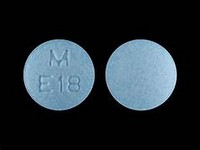Enalapril maleate
CLINICAL USE
Angiotensin converting enzyme inhibitor:Hypertension Heart failure
DOSE IN NORMAL RENAL FUNCTION
2.5–40 mg daily
PHARMACOKINETICS
DOSE IN RENAL IMPAIRMENT
GFR (mL/MIN)
DOSE IN PATIENTS UNDERGOING RENAL REPLACEMENT THERAPIES
IMPORTANT DRUG INTERACTIONS
Potentially hazardous interactions with other drugs
ADMINISTRATION
Reconstition
–
Route
Oral
Rate of Administration
–
Comments
–
OTHER INFORMATION
Side effects (e.g. hyperkalaemia, metabolic acidosis) are more common in patients with impaired renal functionClose monitoring of renal function during therapy is necessary in those with renal insufficiencyRenal failure has been reported in association with ACE inhibitors in patients with renal artery stenosis, post renal transplant, and in those with severe congestive heart failureHigh incidence of anaphylactoid reactions has been reported in patients dialysed with high-flux polyacrylonitrile membranes and treated concomitantly with an ACE inhibitor – this combination should therefore be avoidedACE inhibitor cough may be helped by sodium cromoglycate inhalersEnalapril maleate is a prodrug that requires hepatic conversion to enalaprilatEnalaprilat injection available on a named patient basis
